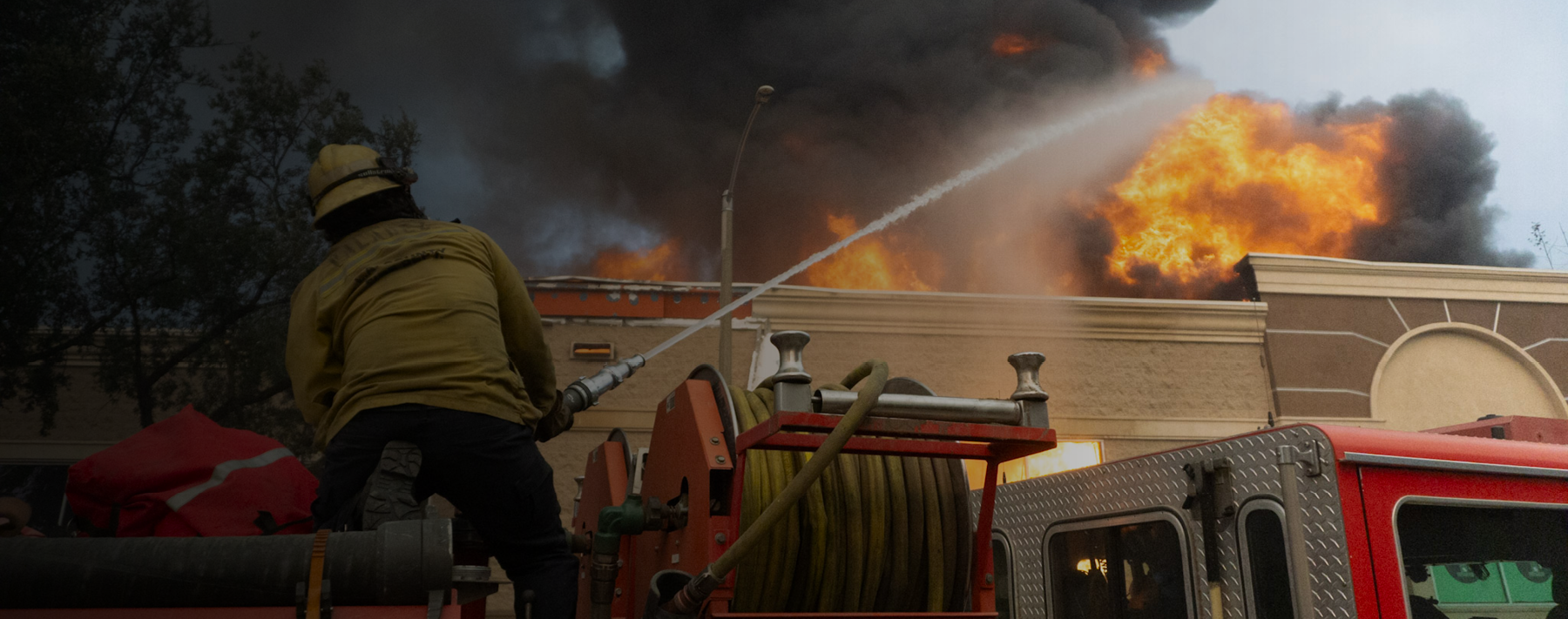Editor’s note: Lexipol recently released a new Live Fire Training Policy and Procedure for customers of our Fire & Rescue Policies & Training solution. If your department does not already subscribe to Lexipol policies, learn more here.
In 20+ years as a live fire instructor with the University of Missouri Fire & Rescue Training Institute, I’ve seen two recurring issues when it comes to live fire training. One is the approach of, “Let’s just go burn stuff”—without objectives, a plan and the right preparation. The other is the idea that “more is better”—the desire of instructors to “make them feel the heat” so the focus becomes how big and hot the fire can get.
Both these approaches set the department up for significant risk—risk that you will expend precious resources without accomplishing training goals, and risk that you will hurt a student.
Why Is Live Fire Training Different?
While a methodical approach is beneficial for any training topic, it’s essential for live fire training. The high-risk, low-frequency nature of live fire training makes it unique. Access to acquired structures has dropped dramatically over the last several decades and is prohibited in some communities. Some departments are fortunate to have burn buildings or mobile trainers, but often these resources are shared regionally, meaning the average firefighter may only receive live fire training annually or even less frequently.
Live fire training is also highly regulated, distinguishing it further from other types of training. It’s rare that we have an NFPA standard specifically focused on one aspect of training, but NFPA 1403 (which will soon be rolled into a consolidated NFPA standard) was developed specifically to address this high-hazard training environment.
In almost all other training, instructors can reliably predict how students will act. That dependability goes out the door with live fire training.
For instructors, live fire training requires a lot more preparation and mentoring than other types of training. If your department relies on internal instructors to conduct live fire evolutions, it’s a good idea to have a formal program to train them. Provide sufficient time for instructors to build skill and comfort with an experienced instructor backing them up before you rely on them to conduct these evolutions independently.
Fire service leaders should also tap into state and national resources to ensure they’re incorporating best practices. The International Society of Fire Service Instructors (ISFSI) offers a live fire certification program for both acquired structures and fixed facilities. This program or another reputable program is beneficial in preparing your local staff for training in this high-hazard environment. Before you’re ready to do it on your own, bring qualified, certified live fire instructors to your department so your trainers can learn safe and effective work practices.
Live Fire Training: 5 Factors for Success
With safety and reducing risk as the foundation of your training approach, the following five factors can further enhance the effectiveness of live fire training.
#1: Training Objectives
“We just want to go burn stuff” is not a training objective. Before conducting live fire training, it’s essential to have clear, specific objectives identified and shared with everyone involved. How will you know the training is a success? What key crew performance indicators or other data points will be measured?
#2: Safe Facility
Live fire training requires a facility that meets NFPA standards. No corners can be cut when it comes to evaluating whether the facility is safe—and that evaluation must be conducted every time. Walkways, doorways, stairwells, vents, fire ignition systems in a class B facility (go/no-go sequence, piloted ignition)—all need to be inspected. Any deficiencies identified must be corrected before the training starts.
“We just want to go burn stuff” is not a training objective.
#3: Sufficient Instructors
Live fire training requires a higher instructor-to-student ratio than many other kinds of training. While the training evolution is ongoing, you must have at least one instructor for every five students and there should always be at least four instructors present. When students are in the box, there should be at least one instructor in the box with them.
#4: Checklists and Go/No-Go Sequences
High-risk industries such as NASA, aviation and the military use checklists and go/no-go sequences to manage the risks associated with their operations. The fire service should do the same with live fire training. Before you light the candle, go through a series of checks: Is the fire ready to go, water supply established, Safety Officer ready, firefighters equipped with proper PPE, etc. You need a hard and fast procedure that is followed every time without question and a checklist established specifically for that training day. Invariably, someone will walk away from a pump panel or a student will forget a glove. The checklist makes sure we don’t go until everyone is ready.
#5: Preparation for the Unexpected
In almost all other training, instructors can reliably predict how students will act. That dependability goes out the door with live fire training. Instructors must be prepared for students to do something they normally wouldn’t do. Claustrophobia hits those who have never experienced it before. Students leave the fire building without telling you. They experience an issue with their equipment and remove something to try to fix it. During flashover training, they react by standing up, placing them at immediate risk for facepiece failure and burns. Instructors must be prepared to address student emergencies, and that means having proper guidance in place and practicing it so instructors know how to act when a student does something unexpected.
The Importance of Live Fire Training Policy
Virtually every fire department in the United States, regardless of type, will be tasked with live fire training at some point. And that means every fire department must have good policy and procedure in place for when they conduct the training. Some fire service leaders may think they only need a policy if they have a training facility at their department or plan to use an acquired structure. But if you bring in a mobile training organization or send your firefighters to another department or institution for training, you still need guidance in place. And your instructors must have a high degree of proficiency on the policy.
Bottom line: Live fire training must be managed with rigorous preparation and adherence to regulations. The potential risk–the possibility of a student getting hurt or killed—is simply too high for anything less.



